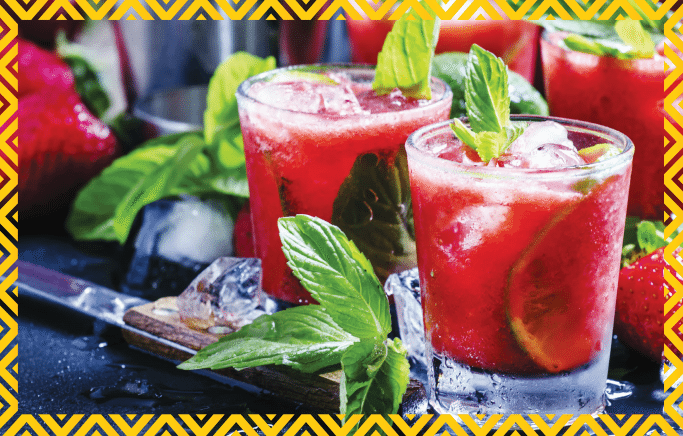After a lifetime of undisciplined eating, I finally embarked on my first real diet, just in time for the holidays. Making my dietary choices by gut instinct, it seemed, had resulted in a gut-centric body. Now I’m going after the core of my guts in my belly, the visceral belly fat, the insidious deposits that lurk between your internal organs, and sometimes in them or on them, far beneath the abdominal wall. It’s the fat you can’t squeeze, no matter how wide your grip. And it’s activist fat. The visceral deposits start to act like their own internal organ, even releasing hormones, some of which have been tied to inflammation and disease.
As diets go, I didn’t pick an easy one. The ketogenic diet used to be nicknamed the “starvation diet,” when it was the only known cure for certain neurological diseases. But in fairness, with this diet it only feels like you’re starving, even though the deprivation is real; complete deprivation of carbohydrates, that is, in an effort to get your body into a fat-burning mode called ketosis.
Success at fat loss (and keeping it off) ultimately boils down to finding a diet and exercise routine that you can actually stick to in the long run. The diet itself can be low-carb, high-carb and even carb-agnostic. Ketosis called to me because I felt like I was already halfway there. I knew I could live on bacon and eggs, because sometimes I practically do. So why not cut out the cake and go for it?
Literally, ketogenic means “ketone producing,” a reference to the splitting of fat molecules into ketones, which are similar to sugars in that the cells of our bodies are able to convert both of these molecules into energy, which, in essence switches the cells from sugar- to fat-burning.
Being in ketosis is thought to impart so many health benefits that many adherents aren’t even trying to lose weight. You won’t lose weight, in fact, unless you eat fewer calories than you consume. In the first week I actually gained four pounds, before losing it back and then some, once I got the hang of it.
Since fat is so dense, you could drink a day’s worth of calories in melted butter, and pretty soon your stomach would be growling. And you can’t go crazy on protein, because if carbs are scarce your liver would sooner convert excess protein into sugar than break fat into ketones. By limiting protein and fat, the physical size of the material available to fill my belly was getting hard to scrape together, especially since many veggies, like potatoes, carrots, onions and others are high in carbohydrates as well. No roasted roots for me, and a plain bowl of oatmeal would contain my entire daily allotment of carbohydrates.
Since I’m not a beer and bread guy, I thought it would be easier. To get your body anywhere near ketosis you have to count them ruthlessly, and counting carbs is as intellectually challenging as it is physically and emotionally demanding. They are everywhere, and the most hardcore practitioners try to keep their daily carb intakes to less than 20 grams per day. A handful of pecans, which are the most kept-friendly nut there is, still delivers about four grams of carbohydrates, or 20 percent of that daily allowance. Ditto for a carrot. The body and belly are feeling better, even if I still find myself wandering around the kitchen wondering what the heck I’m supposed to eat.
I had figured out how to stay on the fat-burning diet and still have a full belly. It came down to the one carbohydrate I’m allowed to eat as much of as I wish: Fiber. A catch-all term for any carbohydrate that we can’t digest, fiber, like other carbs, has a way of filling the belly. Unfortunately, lots of high-fiber foods, including many fruits and veggies, also contain sugar and digestible carbohydrates. Finding enough fiber to include in one’s ketogenic diet, then, becomes a necessity.
This isn’t a bad thing, because fiber has a long list of beneficial impacts, including the lowering of blood sugar levels, scrubbing your digestive tract and keeping your gut bacteria happy and well-fed. Basically, find yourself some high-fiber veggies that are low on sugars. Leafy greens like spinach, kale, mustard and chicory, as well as lettuce and other leaves. Eat leaves until full, dressed in a high-fat, low-carb manner, which is hardly a tall order among salad dressings.
I’m not saying that anyone should follow me and do what I do. In fact, as a general rule I suggest doing the opposite. But nonetheless, allow me to leave you with a recipe for Eggs in a Forest that anyone will like. It’s basically eggs and bacon, plus fibrous leafy green veggies. It could just as easily be cauliflower or broccoli, but today I’m doing greens.
Get the bacon going, chopped or in strips, with some olive oil. Add the toughest leaves, like kale. When tough greens and bacon are nearly done, add onions and garlic, chopped, adding butter as necessary—redundancy among fats is a beautiful thing. Then crack an egg or two on top of the tangled business. When the egg is nearly done to your liking, smother the pan with tender greens, like spinach or tat-soi, and put a lid on briefly. Sprinkle with salt or soy sauce and pepper, and serve with mayo, and the hot pepper of your choice.











